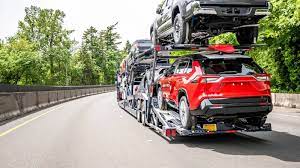Whether it is interstate or overseas, shipping a car is a major logistical effort demanding meticulous planning and execution. Your own preparedness and alertness also affect the safety and security of your vehicle, aside from the dependability of the transportation service. To guarantee your automobile arrives without problems, industry insiders suggest a set of best standards. You should know this.
Select a Transport Company with Good Reputation
Choosing a reliable vehicle shipping company comes first and most important. Experts insist on the need of looking into the credentials of the carrier. Make sure they have a valid Motor Carrier (MC) number and are registered with the Department of Transportation (DOT). Reliable businesses will also have detailed insurance coverage, good client communication, and a track record of excellent ratings.
Ask several carriers for quotes; don’t let the lowest pricing guide your choice entirely. Very low services might compromise customer care, insurance, or safety. Investing in peace of mind is always preferable than to take chances with delays or damage.
Choose the best shipping approach
Generally speaking, two shipping options are open transport and enclosed transport. Though more regular and affordable, open carriers expose your automobile to road debris and weather. Enclosed transportation offers more safety for luxury, vintage, or high-value vehicles. Highly recommended.
Particularly for cars needing particular handling, enclosed transportation is worth the extra cost since it reduces damage risk during transportation, according experts concur. Usually acceptable and inexpensive for simple models across short distances is open transportation. Reputable options like Kent Car Transporters are known for combining affordability with professional-grade service.
Get your vehicle ready properly
Good planning can greatly help to avoid problems connected to shipping. Cleaning your vehicle inside and outside before pickup is recommended by specialists. This documents any preexisting scratches or dents and lets one carefully examine its condition.
Not usually covered by the carrier’s insurance, remove any personal items and loose objects from the vehicle. To cut weight and guarantee safety during loading and unloading, disable the alarm system, inspect tire pressure, and confirm the fuel tank is just around a quarter full.
Record the state of the vehicle
Arrange a thorough check with the shipping agent before passing over the keys. Capture images of the car from all angles, including close ups of any already noted damage, using a camera or phone. Make sure these photos have timestamps and are safely stored.
The shipping company ought to present a Bill of Lading detailing the state of the car upon pickup. Thoroughly examine this paper and make sure all notes correspond with your inspection. Repeat the inspection upon delivery and check the condition of the car against your images and the Bill of Lading.
Check Insurance Coverage
Check the extent of the insurance the transporter offers even if it claims. Many specialists suggest contacting your personal vehicle insurance company to confirm whether your policy covers shipping accidents. Buy additional insurance for high-value cars or international deliveries if needed.
Request a copy of the insurance certificate from the transport firm and clarify—collision, theft, natural disasters, or transport related damage. A reliable carrier will readily provide this information and respond to all of your inquiries.
Stay Informed and Participative
Communicate frequently with the transporter once your vehicle is moving. Most trustworthy businesses either have periodic updates or real time tracking. Professionals advise proactive follow ups, particularly for overseas or long-distance moves.
At delivery, thoroughly inspect the car and promptly note any issues. Report fresh damage right away on the Bill of Lading and file a claim with the insurer of the carrier.
Adhering to this professional guidance will ensure a safe, secure, and stress free automobile shipping experience as well as lower risk. With proper planning and the correct transport partner, your car might be transported effectively—exhibiting exactly as it left, in excellent condition.









